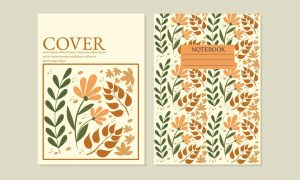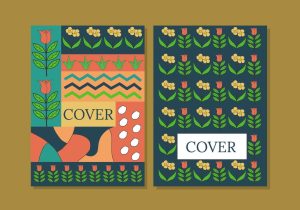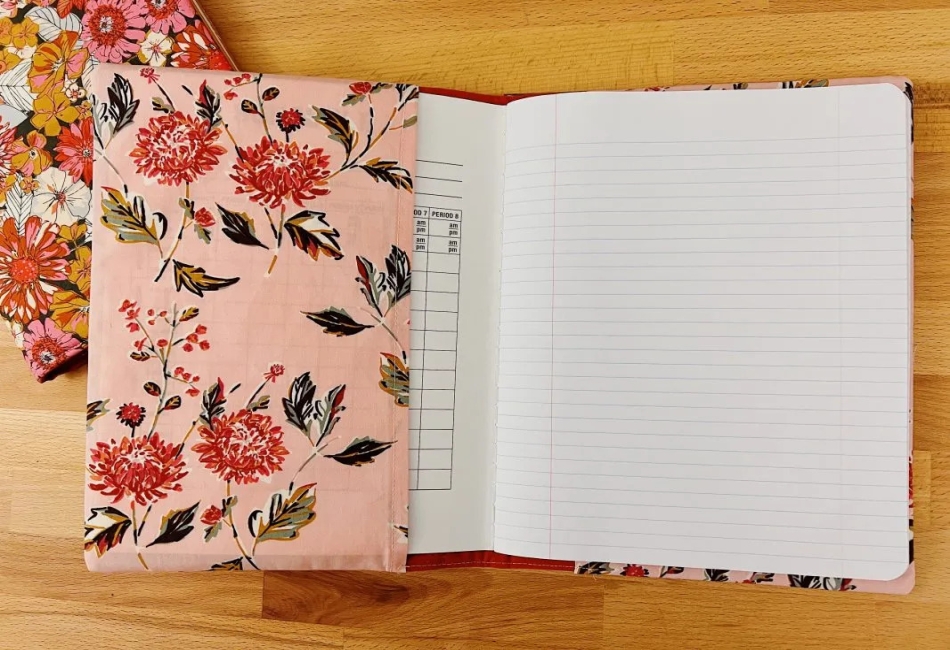Book covers are the first impression a reader has of a story, and in a saturated market, standing out on a shelf—or screen—has never been more important. While some covers rely on imagery or typography alone, pattern book covers offer a unique and versatile design approach. These covers incorporate repeated elements, motifs, or textures to create visual rhythm and personality, often enhancing both aesthetic appeal and thematic coherence. From intricate floral patterns to bold geometric layouts, pattern book covers are making a powerful statement in modern publishing. This article explores their significance, styles, and design strategies to help authors and designers leverage pattern-based covers effectively.
What Are Pattern Book Covers?
Pattern book covers are designs that use repeated decorative elements or motifs as a central visual feature. These patterns can be subtle and monochromatic or bold and colorful. The repetition of design elements helps create structure, rhythm, and cohesion, while also adding layers of visual interest that make a book instantly recognizable.
Patterned covers are often used across a variety of genres—from literary fiction and poetry to children’s books, historical novels, and design-focused nonfiction. Whether symmetrical and orderly or abstract and organic, patterns bring a unique design sensibility that blends art and branding.

Why Choose a Patterned Cover?
There are several compelling reasons to choose a patterned book cover:
-
Visual Consistency: Patterns create harmony and can unify multiple visual elements, making the design feel intentional and complete.
-
Brand Identity: Patterned motifs can become part of an author’s or publisher’s signature look, especially across a series or imprint.
-
Shelf Impact: The repetitive nature of patterns often creates a visually stimulating effect, making the book stand out among others.
-
Versatility: Patterns can be tailored to suit a wide range of moods—whimsical, elegant, mysterious, minimal, or dynamic.
-
Timeless Appeal: Pattern designs often transcend fleeting trends, offering a classic look that ages well.
Types of Patterns Used in Book Covers
1. Geometric Patterns
Characterized by shapes like circles, triangles, and squares, geometric patterns convey modernity, structure, and clarity. They’re commonly seen in nonfiction, science, and design-related titles. These covers often suggest rational thinking and intellectual depth.
2. Organic Patterns
Using natural elements like leaves, waves, clouds, or floral motifs, organic patterns are especially popular in literary fiction, poetry, and lifestyle books. They create a soothing, harmonious feel and often evoke emotions or themes of nature and growth.
3. Abstract Patterns
These designs utilize irregular shapes, brush strokes, or textures that don’t follow a traditional motif. Abstract patterns lend an artistic, experimental tone, perfect for contemporary or avant-garde works.
4. Cultural and Historical Patterns
Inspired by traditional textile designs, architectural motifs, or indigenous art, these patterns reflect cultural depth and heritage. They are especially effective for historical fiction, memoirs, or culturally focused nonfiction.
5. Thematic Patterns
Custom illustrations repeated in a pattern—like books, stars, pencils, or birds—can directly tie into the content of the book, making it playful and purposeful. These are particularly effective in children’s books and educational materials.

Notable Examples of Pattern Book Covers
-
Penguin Clothbound Classics Series: Designed by Coralie Bickford-Smith, this series features books with beautifully woven patterns tied to each novel’s theme (e.g., peacock feathers for The Picture of Dorian Gray).
-
Vintage Classics Editions: Many of these books use minimalist patterns based on symbols or repeated type-based elements that convey the essence of the story.
-
The School of Life Books: Known for their modern, abstract patterned covers that create a recognizable and cohesive brand identity across a range of philosophical and psychological topics.
Designing a Pattern Book Cover: Best Practices
-
Start with the Theme
Your pattern should reflect the book’s content. A mystery novel might benefit from a moody, sharp-edged pattern, while a romance novel could use soft, flowing shapes. -
Choose a Color Scheme
Color plays a huge role in setting tone. Contrasting hues grab attention, while a monochrome palette offers subtlety and elegance. -
Keep Legibility in Mind
Ensure the title and author name are easily readable over the pattern. You can use solid blocks, overlays, or adjust the pattern’s opacity in areas with text. -
Repeat Thoughtfully
Patterns should enhance, not overwhelm. Use repetition with purpose, maintaining a balance between visual interest and clarity. -
Test Across Formats
Always preview how the pattern looks on print covers, e-books, and thumbnails. Intricate designs can sometimes lose detail at smaller sizes.
When to Avoid Patterned Covers
While patterned covers are beautiful and versatile, they may not be suitable for every book. Avoid them if:
-
The pattern distracts from powerful imagery or photography central to the theme.
-
The genre strongly favors photorealism or bold symbolism, such as some thrillers or biographies.
-
The cover becomes too “busy,” hindering readability or brand cohesion.
In such cases, subtle textures or minimal patterns can be used as background elements rather than dominant features.

The Rise of Pattern Covers in the Digital Age
With digital publishing and social media influencing reader decisions, book covers have become more important than ever. Pattern book covers are particularly effective in the digital space:
-
Highly Shareable: Eye-catching patterns are popular on Instagram, Pinterest, and TikTok.
-
Recognizable Branding: For series or collections, consistent use of patterns strengthens visual identity.
-
Adaptability: Patterns can easily translate into merchandise like bookmarks, tote bags, and apparel—offering additional marketing avenues.
Final Thoughts
Pattern book covers offer a timeless yet contemporary approach to book design. Whether bold and geometric or soft and organic, patterns create harmony, capture attention, and tell a story before the first page is turned. For authors, publishers, and designers seeking a visually engaging and versatile design solution, embracing patterns could be the key to turning casual browsers into curious readers. As publishing trends evolve, patterned covers continue to prove that great design is not just seen—it’s felt.
FAQ
Pattern book covers template
A pattern book covers template is a pre-designed layout that incorporates repeated motifs, shapes, or illustrations to create a visually cohesive and eye-catching cover. These templates are ideal for authors, publishers, or designers looking to save time while maintaining a professional aesthetic. Typically available in editable formats like PSD, AI, or Canva, pattern templates allow customization of colors, fonts, and imagery to align with a book’s theme or genre. Whether featuring geometric designs for modern nonfiction or floral patterns for romance or poetry, these templates provide a versatile foundation that enhances visual appeal while ensuring consistency across series or collections.
Pattern book covers pdf
A pattern book covers PDF is a downloadable resource that showcases a curated collection of book cover designs featuring patterned artwork. These PDFs are often used by designers, authors, and publishers as inspiration guides or presentation tools, offering examples of how repeated motifs—such as geometric shapes, botanical illustrations, or abstract textures—can enhance visual storytelling. Some PDFs may include editable templates or design tips for customizing pattern-based covers, making them valuable for branding, marketing, or creative planning. Whether for personal reference or professional collaboration, a pattern book covers PDF serves as a convenient and visually rich tool for exploring design possibilities.
Pattern book covers free download
If you’re seeking patterned book covers available for free download, there are several resources offering a variety of designs to suit different genres and preferences. These templates often come in editable formats like PDF, PSD, or AI, allowing for customization to align with your book’s theme and aesthetic.
Canva provides a vast collection of free, customizable book cover templates. Their user-friendly platform enables you to personalize designs with patterns ranging from geometric shapes to floral motifs, suitable for various genres. You can easily edit text, colors, and images directly in your browser and download the final design in multiple formats.
Template.net offers a selection of free book cover templates in PDF format, featuring diverse patterns and styles. These templates are designed for easy editing and printing, making them ideal for authors and publishers looking for quick and professional cover solutions.
Presto Page provides free PDF downloads of book cover templates, including options with patterned designs. Their templates cater to various book sizes and binding types, offering flexibility for different publishing needs.
For those interested in fabric book covers, Made for Mermaids offers a free PDF pattern for sewing fabric book covers in two sizes. This is a great resource for crafters looking to create personalized, reusable book covers with patterned fabrics.
These resources provide a range of options for obtaining patterned book covers, whether you’re looking for digital templates to customize or sewing patterns for a hands-on project.




